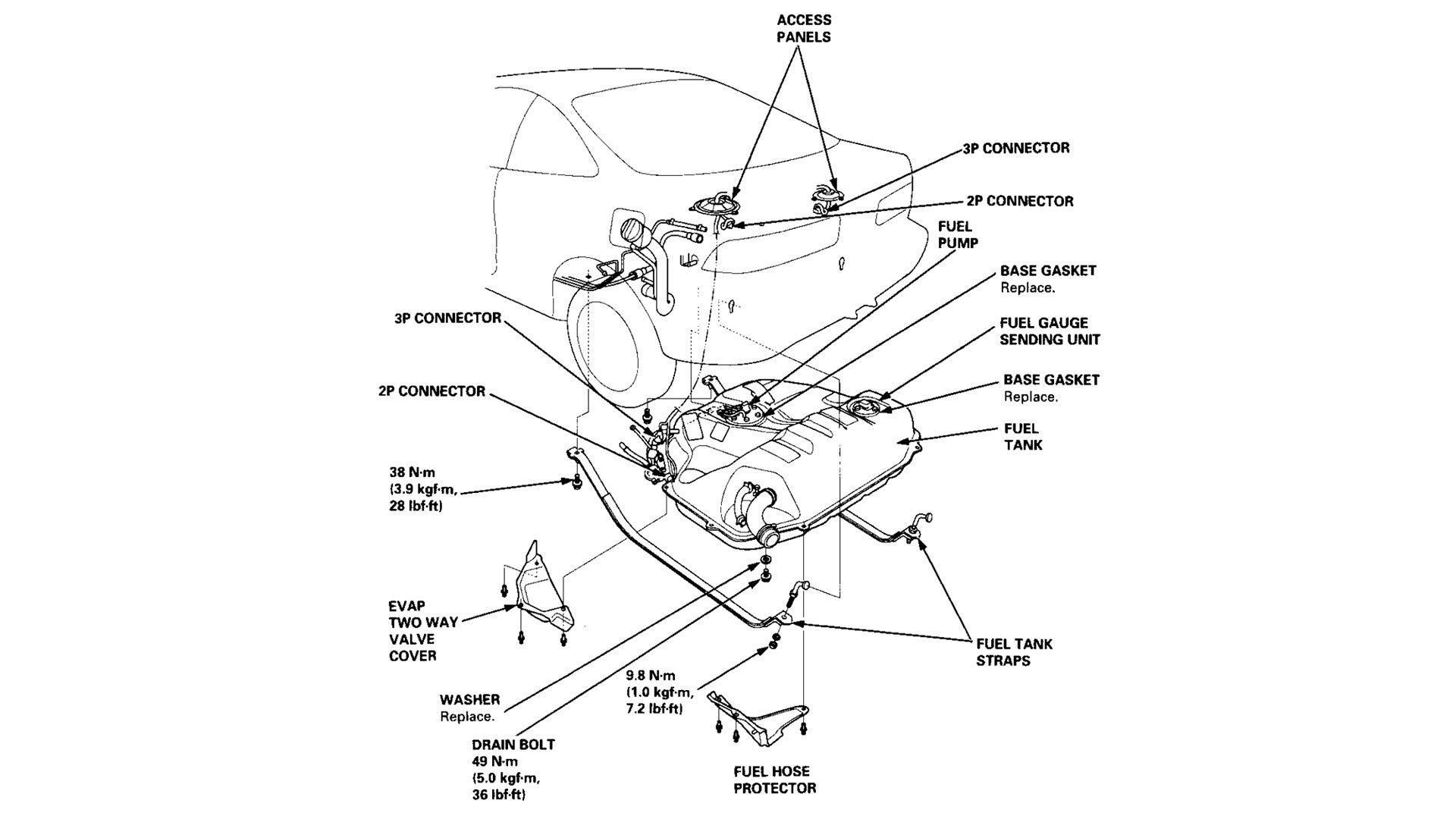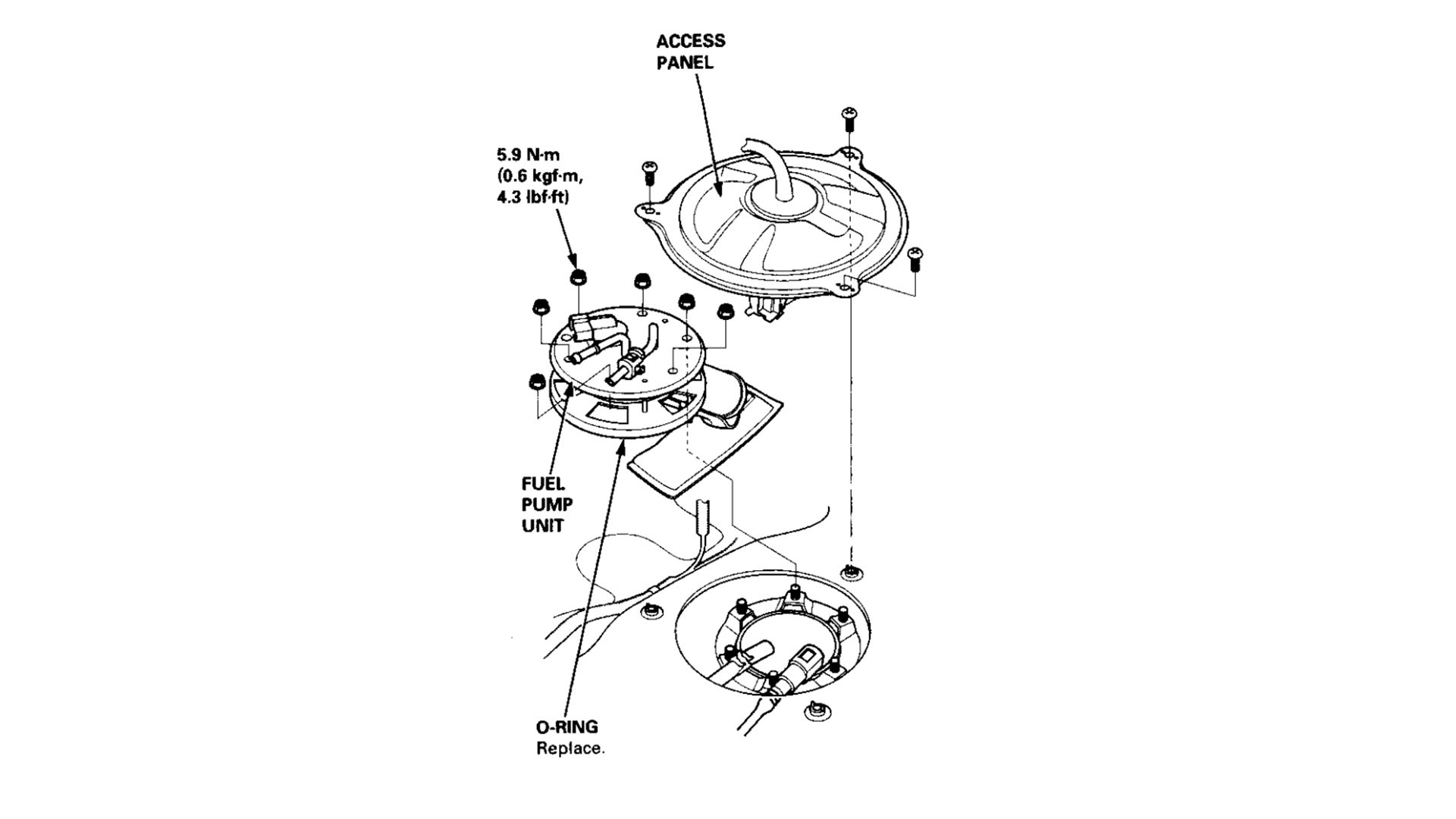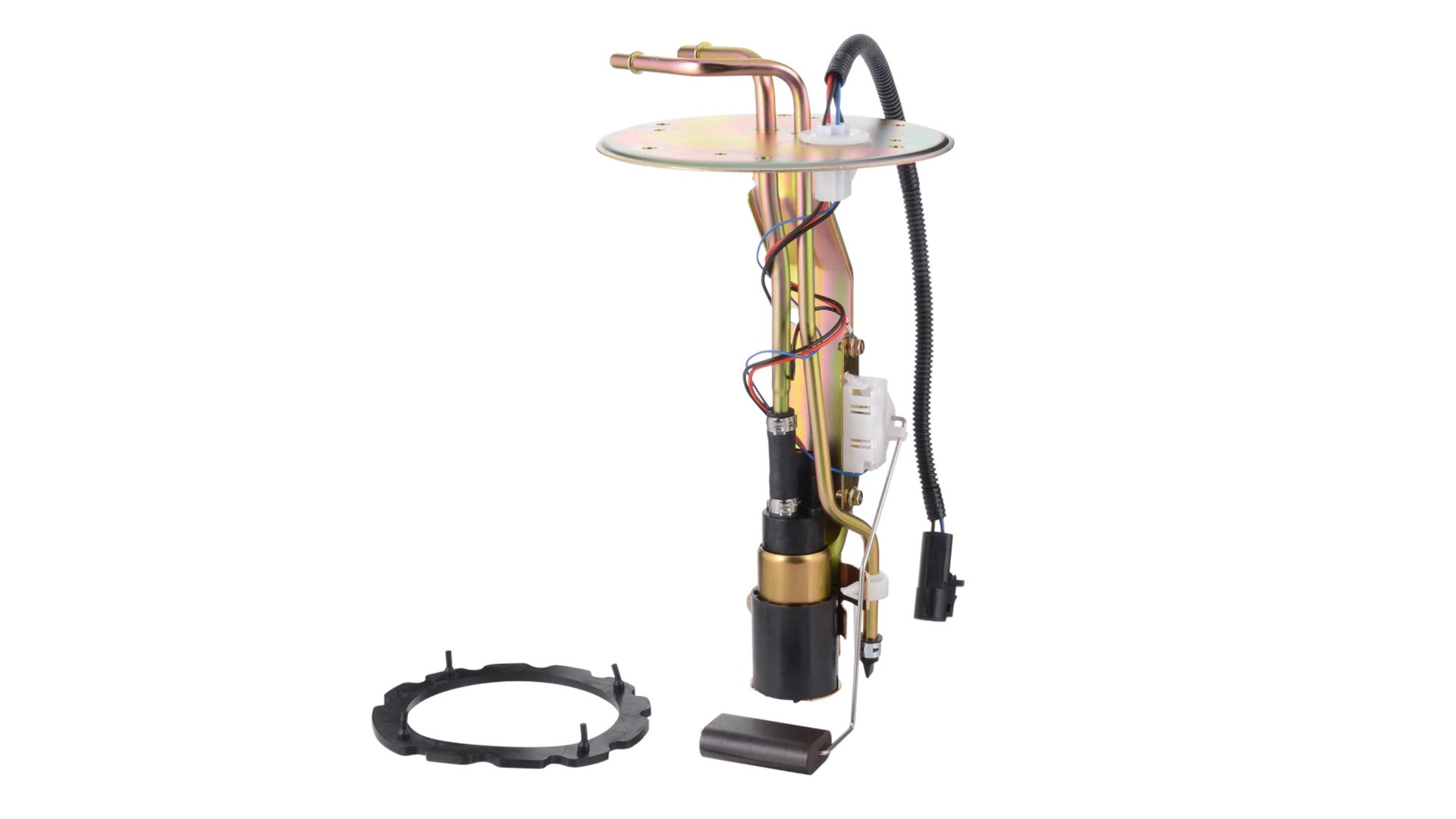The Drive and its partners may earn a commission if you purchase a product through one of our links. Read more.
A fuel pump’s primary task is to deliver fuel from the storage tank to the engine, and works with multiple other auto parts to accomplish that duty. That can make it difficult to know whether or not it’s failing, unless you know the symptoms of a bad fuel pump.
The most important key to diagnosing a car is listening and understanding how it normally works, runs, and acts on a daily basis. What sounds does it make? What rattles? What are its normal RPMs? With this knowledge base, and an attentive mindset, you’ll notice when the vehicle starts running irregularly.
Realizing the vehicle starts hard, struggles to maintain idle, or flexes less power is the first step in accepting there’s an issue and setting out to fix it. Because so many car parts are interconnected and interdependent, diagnosis is not always a simple exercise. It requires trial and error, and pinpointing the exact source often requires the process of elimination.
That’s what we’re here to discuss, in regards to fuel pumps. Follow The Drive’s thorough guide to bad fuel pump symptoms and figure out what the heck is going on with your ride.
What Is a Fuel Pump?
A fuel pump is a mechanically or electrically controlled mechanism that sends fuel from the gas tank through the fuel filter to the fuel rail. From there, fuel is distributed to the injectors and sprayed into each engine cylinder combustion chamber. On older vehicles, the pump sends fuel to a carburetor.

An Acura Integra diagram.
Types of Fuel Pumps
Automobiles have primarily transitioned away from mechanical pumps on the engine block in old cars to electric pumps inside the gas tank on modern vehicles. Below, we break down the various types of pumps and how they work.
Mechanical fuel pump: A mechanical fuel pump uses positive displacement with a plunger or a diaphragm. In a cyclical action, the pump draws in fuel, traps it, then moves that fuel toward the carb and engine, and repeats the process.
Electric fuel pump: An electronic fuel injection system on modern vehicles requires higher pressure, which is accomplished, in part, by using an electric fuel pump rather than a mechanical module. Here are a few examples of electric pumps:
- In-tank: The majority of new vehicles sold today use fuel pumps that are located inside the fuel tank. This helps protect the module, and the gas helps keep it cool.
- Inline: Much easier to replace than an in-tank pump, an inline pump is located between the gas tank and the engine and is installed within the fuel system track. These are often mounted under the car or in the engine bay.
- Rotary vane: Like mechanical pumps, rotary vane pumps use positive displacement to move the fuel along. Inside a rotary vane pump, a rotor with “paddles” operates off-center within a cavity. Because it is off-center, it creates a crescent-shaped pocket of space that lets the fuel in. The vanes close the small amount of fuel as the rotor moves, and release the fuel once it crosses the outlet valve. Different types of vane pumps include rolling vane, sliding vane, flexible vane, and swinging vane.
- Gerotor: A gerotor pump also uses positive displacement but uses different parts to achieve that method. Within a gerotor pump, there are two interlocking gears, a toothed inner gear and an outer ring gear with smooth curved lobes. The inner gear is offset from the outer gear. Thus, when they rotate, small pockets of fuel can be trapped, pressurized, and released.

A diagram of an Acura Integra fuel pump.
How Long Do Fuel Pumps Last?
Fuel pumps are not part of a regular maintenance schedule and only need to be replaced when they fail. Most fuel pumps should last well past 100,000 miles.
Symptoms of a Bad Fuel Pump
Though these symptoms could be sourced to a faulty fuel pump, that is not always the case.
Car Won’t Start
There are a host of issues that could prevent a car from starting, but a lack of fuel is one of the first things to check. If the fuel pump can’t send fuel to the engine, it won’t start.
Related post: How to Jump Start a Car Without Cables
Sputtering
If the vehicle starts but runs rough and possibly dies, the engine might not be getting enough fuel.
Car Dies Under Heavy Load
If you test your vehicle’s limits, whether that be hard-driving or hauling extra weight and the power cuts off, it might be a symptom the fuel pump cannot keep up with the driver’s demands.
Inconsistent and Unintended Acceleration
If the amount of fuel isn’t properly regulated by the fuel pump, a car could accelerate without input due to an overage of fuel.
Decreased Fuel Efficiency
If you notice your vehicle is suddenly gulping more gas than usual, the fuel pump could be damaged and sending the incorrect amount of fuel.
Increased Engine Temperature
Should the fuel pump fail to provide the proper amount of gas to the engine, the engine could be overstressed, which could cause an irregular rise in temperature.

A MasterPro Fuel Pump
What’s the Easiest Way to Check a Fuel Pump?
A simple method to check if a fuel pump is turning on is to listen for it. Open the fuel door, remove the fuel cap (if your car has one), and turn the car’s ignition to “On.” Put your ear next to the fuel door and listen for a humming noise. If you don’t hear any noticeable action, the pump is likely not working.
Diagnosing a Fuel Pump Problem
Ask yourself these questions to narrow down the source of your issues.
- Does the car have gas?
- Is the fuel pump turning on?
- Is the fuel pump fuse bad?
- Is the fuel pump relay fuse bad?
- Is there a poor connection on the fuel pump?
- Is the fuel filter clogged?
- Are the fuel injectors clogged?
- Is the fuel pressure in range?
- Does the fuel cap have a clean reliable seal?
Related post: How to Clean Your Car’s Fuel Injectors
How Much Does It Cost To Replace a Fuel Pump?
Depending on the car and how old the car is, fuel pump costs range from $50 to hundreds of dollars.
Tips to Keep Your Fuel Pump Healthy
You need your fuel to continue pump, pump, pumping it up like Joe Budden, so you don’t want to unintentionally damage the unit. These small steps should help keep it in top shape.
- With in-tank pumps, the gasoline doubles as a coolant. If a tank is regularly low, you are unintentionally allowing your pump to withstand extra heat. Always regularly fill your tank completely every time.
- Change the fuel filter according to the manufacturer’s recommended timeline. A clogged filter could create unintended pressure within the fuel system.
"bad" - Google News
August 06, 2020 at 11:01PM
https://ift.tt/3a2pR3W
Bad Fuel Pump Symptoms - The Drive
"bad" - Google News
https://ift.tt/2SpwJRn
https://ift.tt/2z7gkKJ

No comments:
Post a Comment